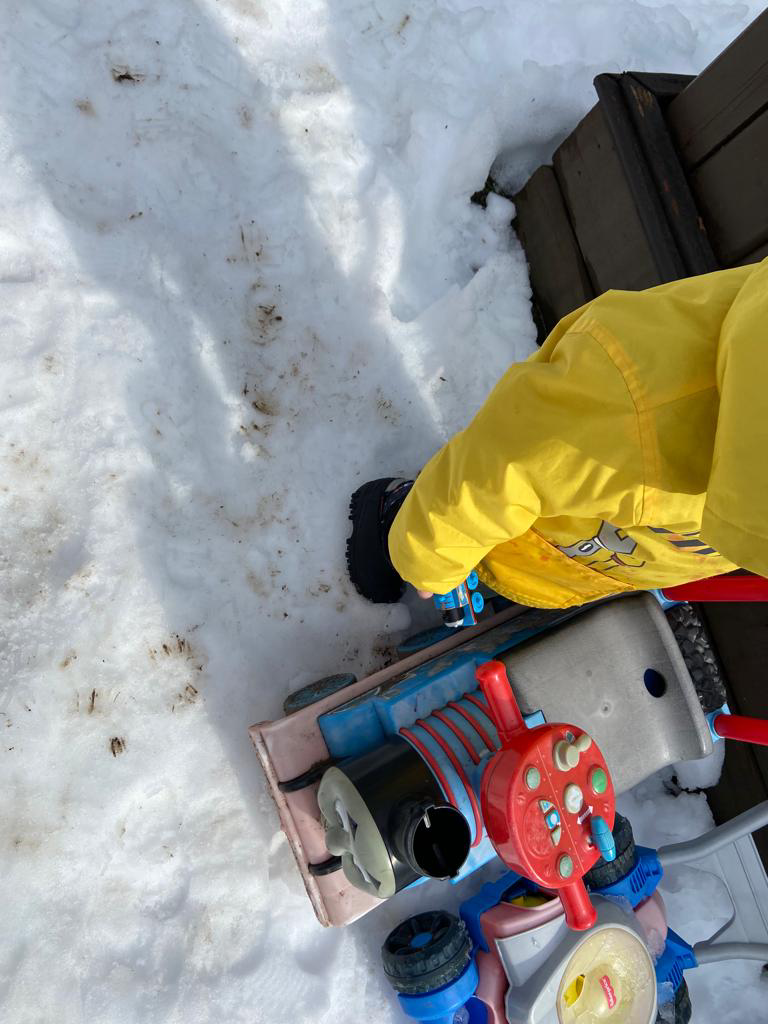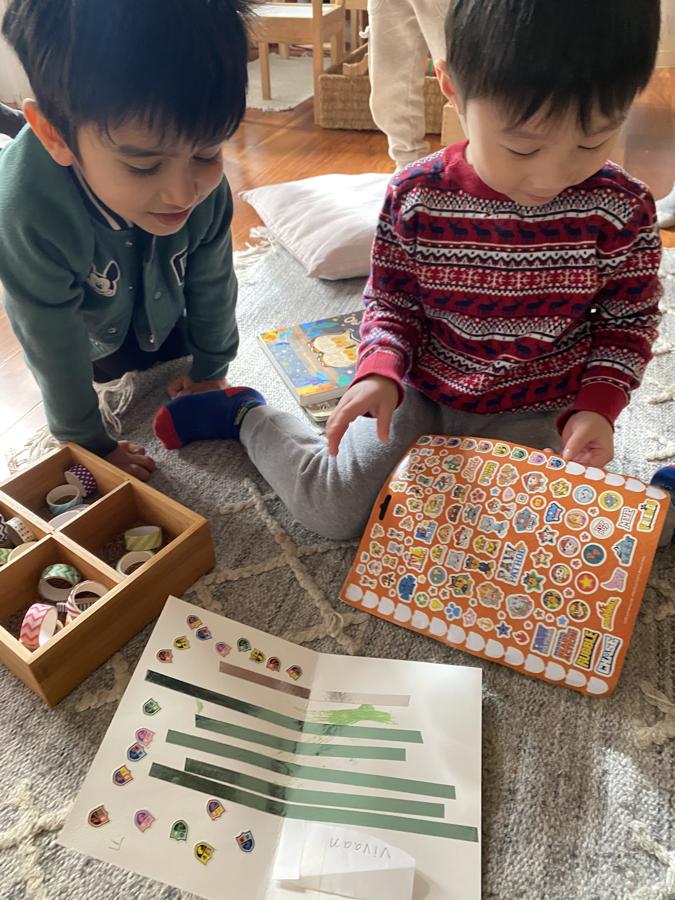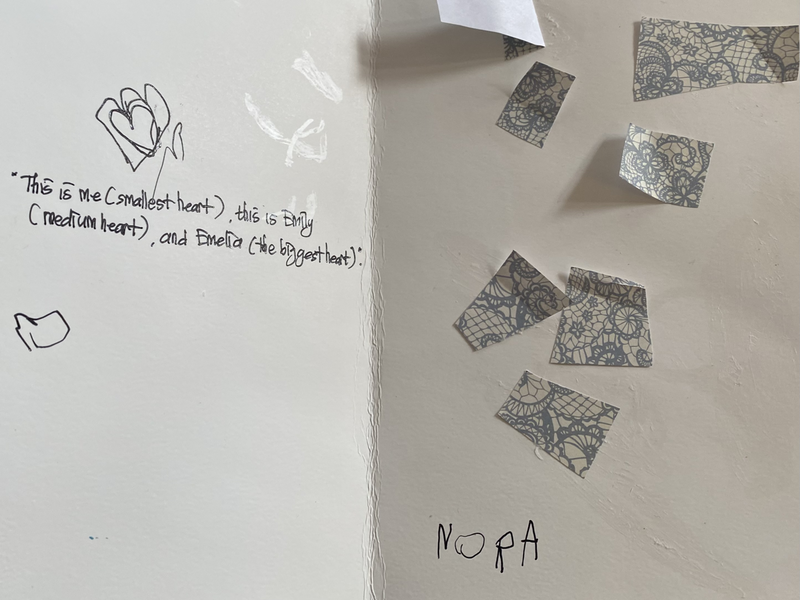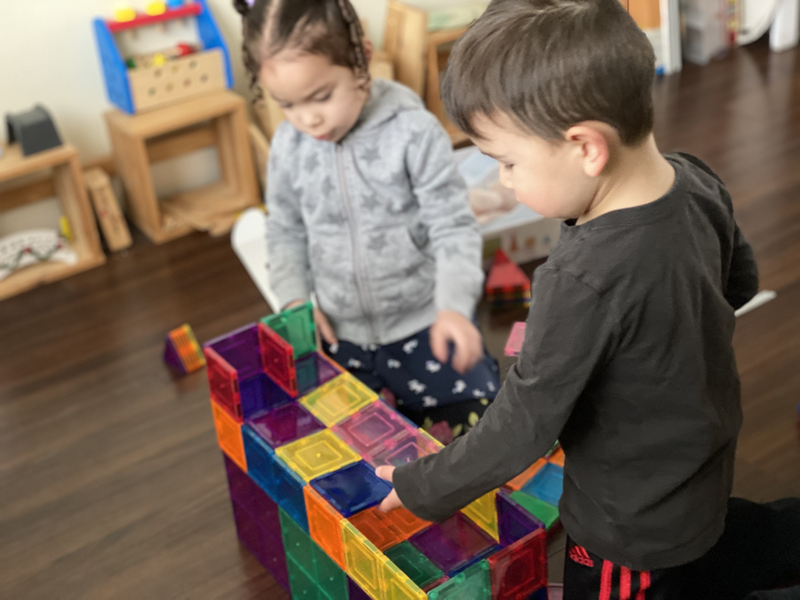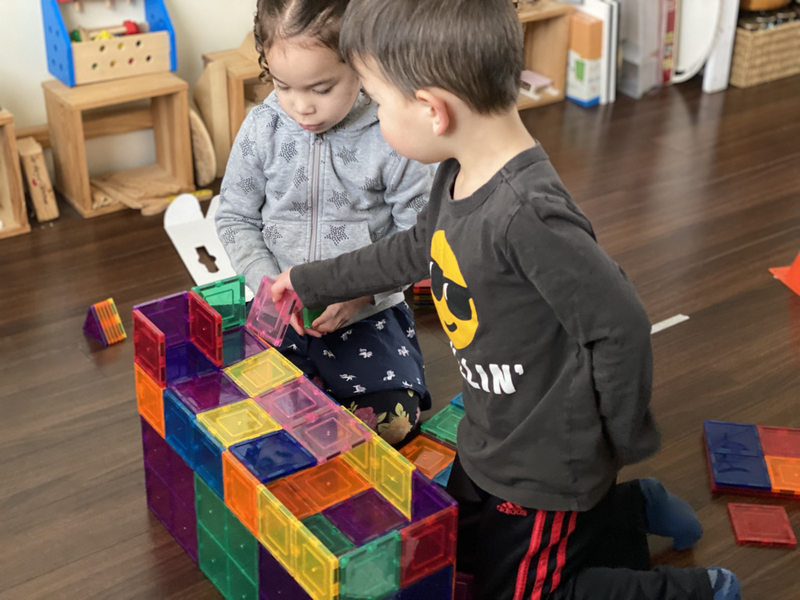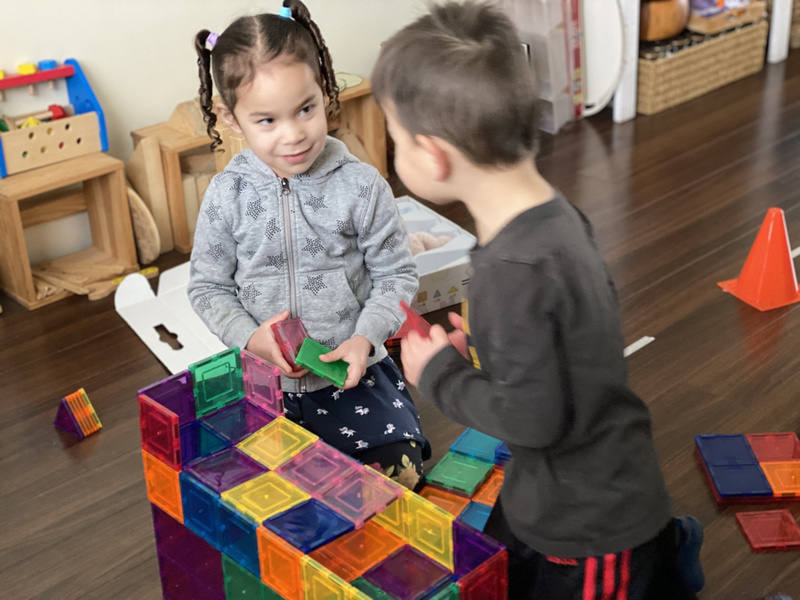|
Hudson takes his Thomas the train outside and when he sees the train outside, he goes to the big one and says, “(An)other Thomas”. He also says, “Two Thomas, Manpreet”. The interesting part that catches my attention is that when he says, “Baby Thomas”. It seems he tries to compare the toys as he may wonder how one is so small and another one is big. Hudson encounters there are toys under the snow and he takes a shovel and starts digging in the snow to discover the toys. This helps him increasing fine motor skills as well as problem solving skills during the play. During outdoor play, Brooks offers water to the tree. When asked why he is doing that, he mentions, "I am helping the tree to grow more and getting better". He also says, "I am being kind to the tree". Manpreet further asks, "What does the tree provide us with?" He mentions, "They give us so many fruits". For we value movement so much as part of our bodies comprehending kindness, we include the many ways. One of them is working with balloons. We sit on them, roll on them, and squeeze them with our hands. We extend our movement with balloons to prompt further awareness. When we are able to navigate our movement in our daily life experiences, we are being part of creating a harmonious relationship. Our body recognizes kindness through moving wisely. By putting into practices, we nurture our abilities naturally. On the simplest level, kindness is showing consideration to others, as opposed to being apathetic. By building relationships with others, we learn to share spaces too. By responding compassionately, we learn to open our field of awareness and scan our surroundings for any foreseen and unforeseen tensions. We take opportunities to turn our workout exercise to spreading kindness. Putting them together, exercise and kindness, offers physical and mental health benefits. How do we respond in correspondence to others' intentions to exhibit kindness? The reactions we share with others connects to the next situations. Fides points out how our actions and reactions should always be mindful toward self and others. His thinking informs us the reciprocity of our relationships. Felix attempts to refer to his action in assisting a friend in need. The more we practice kind acts the more natural our actions become. We offer a different perspective to comprehend this concept of kindness. Kelsey illustrates Dr Seuss’ The Grinch to all of us. We attempt to comprehend the many kind ways in addressing our challenging situations instead of the ways Grinch acts. We too conclude with a question, “How do we make Grinch smile more than being grumpy?”. Kindest,
Children & Friends.
0 Comments
Leave a Reply. |
No part of this publication may be reproduced, distributed, or transmitted in any form or by any means, including photocopying, recording or any other electronic or mechanical methods, without the prior written permission of the publisher.
Archives
July 2024
|
